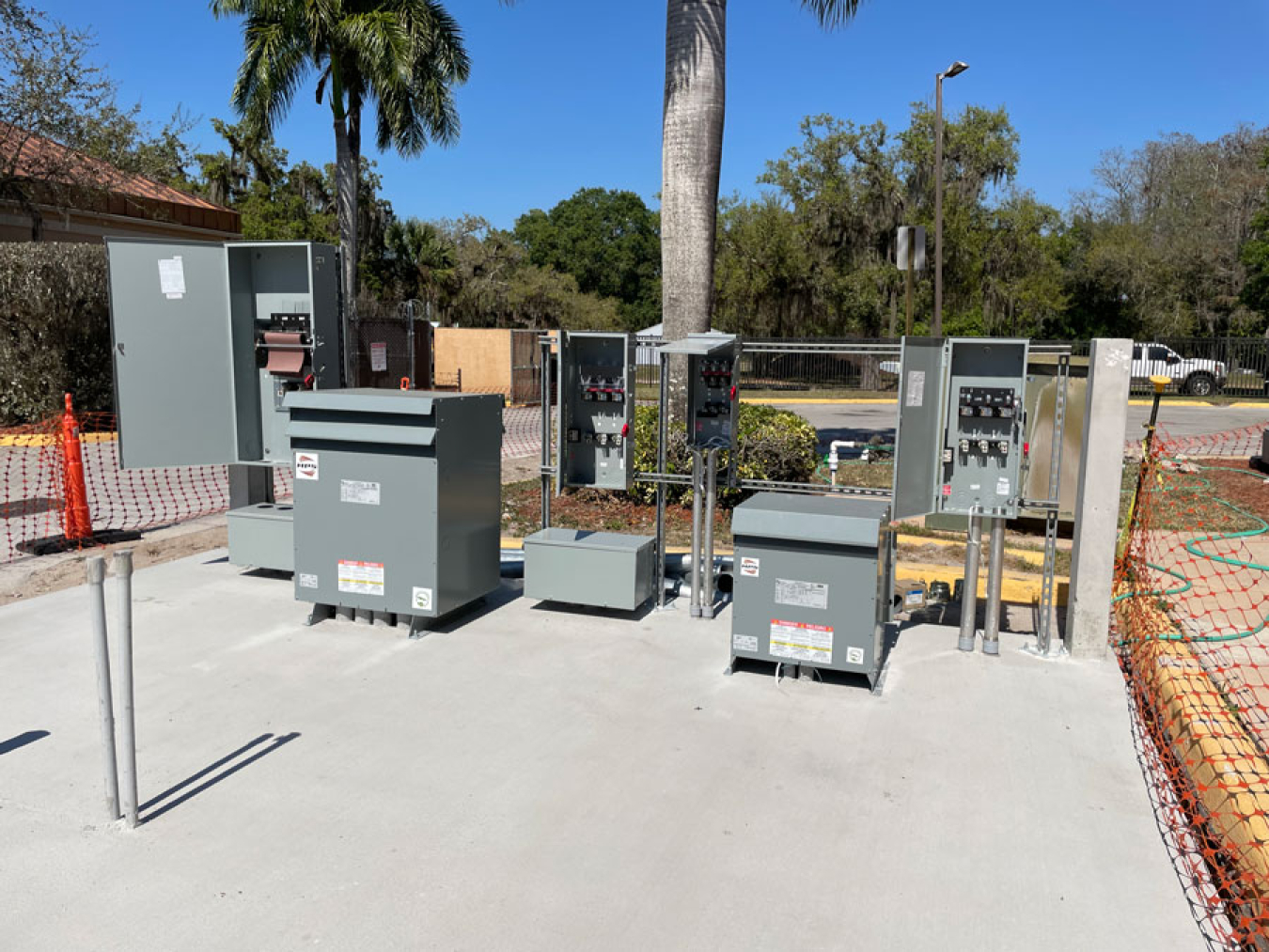Learn about the Seminole Tribe of Florida’s solar-plus-storage microgrid project, cofunded by the Office of Indian Energy.
Office of Indian Energy Policy and Programs
June 12, 2023Hybrid Solar-Plus-Battery Storage System Boosts Energy Security in Tribe’s Rural Areas
In this tribal energy snapshot, learn more about the Seminole Tribe of Florida’s solar-plus-storage microgrid project, cofunded by the U.S. Department of Energy Office of Indian Energy.

Project Quick Facts
The Tribe is installing solar photovoltaic (PV) capacity and adding battery energy storage, transfer switches, and controls on its rural Reservation of Big Cypress to service four essential facilities: the Field Office, the Health Clinic, the Public Safety Complex, and the Senior Center. The primary goals of the project are to provide reliable electricity to residents during grid outages and weather events and to lower energy costs. This project precedes a newer project to add additional solar and battery storage capacity to other parts of the Reservation.
Take a glance at the expected project benefits by the numbers:

Total power generation:
The system generates 445 kilowatts of solar photovoltaic potential.
Battery energy storage capacity:
The system provides roughly 1,750 kilowatt-hours of battery energy storage capacity.
Savings to the Tribe:
The total cost savings for the Tribe is approximately $3 million (over the life of the system).
Total project cost:
The cost of the project is roughly $2,945,017, which is shared by DOE ($1,608,000) and the Tribe ($1,337,017).
Insight From the Project Team
Learn from Harvey Rambarath, Assistant Director of Planning and Development with the Seminole Tribe of Florida on his experience with the project.
"In August 2017, Hurricane Irma was a wake-up call for us. It tore through the state of Florida, and it affected all of the Tribes’ Reservations. Some of our rural Reservations were without power from the electrical grid for weeks. And we quickly realize that backup generators are not designed to run nonstop for weeks. I am very excited that once this project gets going, and the energy savings and reliability is demonstrated, it will serve as a pilot project for our further energy sovereignty initiatives."
- Harvey Rambarath, Assistant Director of Planning and Development with the Seminole Tribe of Florida
Was there a specific event or concern that made the Tribe decide to pursue this project?
In August 2017, Hurricane Irma was a wake-up call for us. It tore through the state of Florida, and it affected all the Tribe’s Reservations. Some of our rural Reservations were without power from the electrical grid for weeks. We quickly realized that backup generators are not designed to run nonstop for weeks. This led to [the creation of] a Renewable Energy Committee, which was tasked with ensuring power continuity across critical tribal operations to the extent possible during and after a storm.
What excites you most about the project?
We had a lot of naysayers and people who didn’t believe that renewable energy was worth it to pursue. I am very excited that once this project gets going and the energy savings and reliability are demonstrated, it can serve as a pilot project for our further energy sovereignty initiatives.
What has been the greatest lesson learned?
New initiatives always take longer than anticipated. I thought developing a suitable design-build contract would have been easy, but it took us over 2 years to get that done. The design was accomplished relatively quickly compared to the contracting, but then came COVID-19 which led to major supply chain issues that resulted in significant delays. We are pushing back and demanding shortened time frames as much as possible so that we can complete and commission this project before the end of this Fiscal Year. We are targeting a ribbon cutting in September 2023.

Learn More
Learn more about this project, including additional background information, cost, and status, on the project summary page.
Explore more tribal energy projects through the tribal energy projects database.

